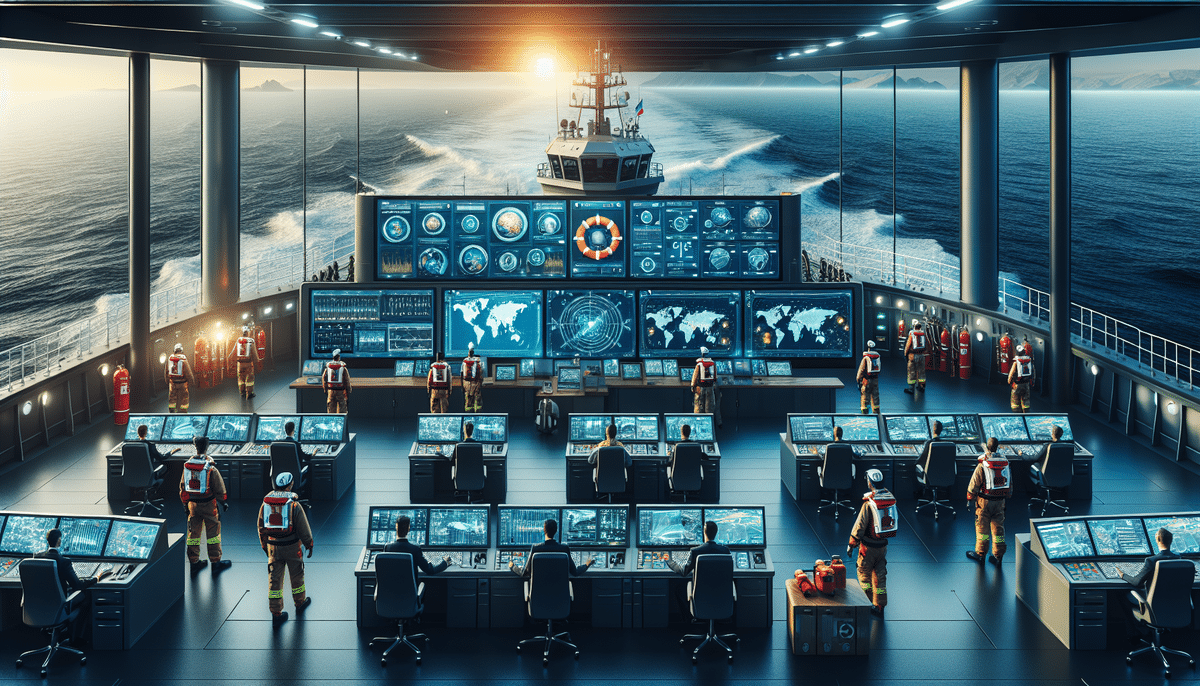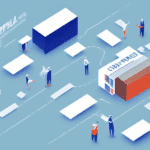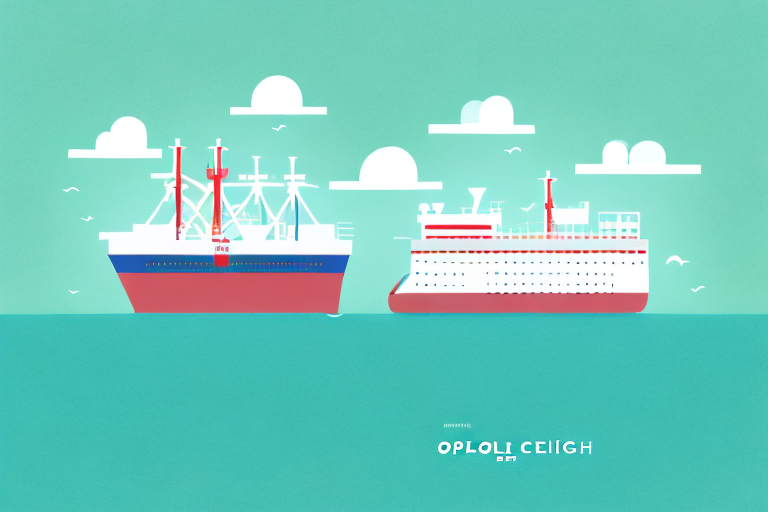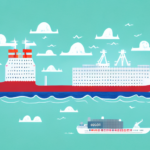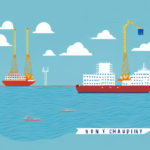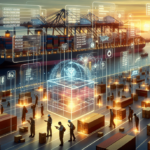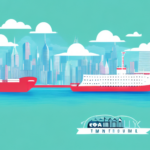Ensuring Safety of Life at Sea with SOLAS Regulations
The safety of life at sea is paramount for everyone involved, from the seafarers aboard ships to the people who rely on ships for transportation and trade. To ensure this safety, the International Maritime Organization (IMO) created the International Convention for the Safety of Life at Sea (SOLAS), which sets out minimum standards for safety practices, equipment, and construction for ships. This article delves into what the SOLAS regulations are, why they are important, their history, key features, the role of flag states in enforcing them, the importance of regular inspections and audits, the use of advanced technology, the challenges faced in meeting the standards, recent incidents at sea, the future of maritime safety, and the importance of commitment to the SOLAS regulations.
What Are SOLAS Regulations and Why Are They Important for Maritime Safety?
The SOLAS regulations were first created in 1914 as a response to the sinking of the Titanic. They have since been updated and amended to current standards to ensure the safety of ships, crew, and passengers. SOLAS regulations apply to all ships engaged in international voyages, including cargo ships, passenger ships, and tankers. The regulations require the implementation of specific safety measures to ensure the safety of life at sea and the prevention of damage to the environment. These measures include:
- Mandatory equipment such as life-saving appliances, navigation and communication equipment, and firefighting systems.
- Ship design requirements related to stability, structural safety, and subdivision standards.
- Crew training, safety management, and ship operations.
One of the most significant updates to the SOLAS regulations was made in 1974, following the sinking of the SS Edmund Fitzgerald in Lake Superior. This incident highlighted the need for improved communication and navigation equipment on ships. As a result, the regulations now require ships to have advanced communication and navigation systems, including radar, GPS, and emergency position-indicating radio beacons (EPIRBs). These systems help ships navigate safely and communicate with other vessels and rescue services in case of an emergency.
The History of SOLAS Regulations and Their Evolution Over Time
The SOLAS regulation was first established in 1914 as a response to the Titanic disaster. It was amended several times over the years, with the most significant amendments occurring after major maritime disasters such as the loss of the Empress of Ireland in 1914 and the tragedy of the MV Derbyshire in 1980. After the sinking of the Titanic, the treaty was signed by the United States, Great Britain, and Germany. Over time, increasing numbers of countries have signed the treaty, resulting in SOLAS regulations becoming a global standard. SOLAS regulations have evolved to keep up with new technology and changing patterns of shipping, ensuring that they continue to set relevant standards for the safety of life at sea. The most recent significant amendment occurred in 2010.
One of the most significant changes to SOLAS regulations was the introduction of the International Safety Management (ISM) Code in 1998. The ISM Code requires shipping companies to establish a safety management system to ensure the safe operation of their vessels. This code has helped reduce the number of accidents and incidents at sea and has improved the safety culture within the shipping industry.
Another important development in SOLAS regulations has been the focus on environmental protection. In 1973, the International Convention for the Prevention of Pollution from Ships (MARPOL) was adopted, which established regulations for the prevention of pollution from ships. This convention has been amended several times, with the most recent amendments in 2011. The SOLAS regulations now include requirements for the prevention of pollution from ships, including regulations for the discharge of sewage, garbage, and oil.
The Key Features of SOLAS Regulations and How They Work to Keep Mariners Safe
SOLAS regulations outline the minimum safety standards for ships, which include the provision of lifesaving equipment, the availability of communication equipment, and compliance with structural safety requirements. They also mandate that ships carry trained personnel who are qualified to carry out emergency drills, as well as life-saving and fire-fighting operations. Key safety features of SOLAS include:
- Emergency lighting
- Phone system between the bridge and the engine room
- Watertight bulkheads that prevent a sinking ship from capsizing
- Regular safety drills
In addition to these safety features, SOLAS regulations also require ships to have a properly functioning navigation system, including radar and GPS, to ensure safe navigation and avoid collisions with other vessels. The regulations also require ships to have a system for monitoring and controlling the ship's stability, which is crucial for preventing capsizing. Furthermore, SOLAS regulations mandate that ships have a system for detecting and controlling fires, including fire alarms, extinguishers, and sprinkler systems. These additional safety features work together to ensure mariners' safety and prevent accidents at sea.
An Overview of the Different SOLAS Chapters and Their Specific Requirements for Ships
SOLAS regulations are organized into various chapters, each with specific requirements for the safety of life at sea:
- Chapter I: General Provisions
- Chapter II-1: Construction – Subdivision and Stability, Machinery and Electrical Installations
- Chapter II-2: Fire Protection, Fire Detection, and Fire Extinction
- Chapter III: Life-Saving Appliances and Arrangements
- Chapter IV: Radio Communications
- Chapter V: Safety of Navigation
- Chapter VI: Carriage of Cargoes
- Chapter VII: Carriage of Dangerous Goods
- Chapter VIII: Nuclear Ships
- Chapter IX: Management for the Safe Operation of Ships (ISM Code)
- Chapter X: Safety Measures for High-Speed Craft
- Chapter XI-1: Special Measures to Enhance Maritime Safety
- Chapter XI-2: Special Measures to Enhance Maritime Security
These chapters cover various aspects, including fire protection and firefighting, vessel routing, safety of navigation, carriage of dangerous goods, radiocommunications, safety of maritime traffic, carriage of harmful substances and wastes, and the training, certification, and watchkeeping of seafarers. In general, SOLAS sets out the minimum requirements that must be met to ensure the safety of life at sea, regardless of the vessel type or voyage.
Chapter II-2 of SOLAS deals with the requirements for fire detection, alarm systems, and fire extinguishing systems on board ships. This chapter also includes guidelines for the maintenance and testing of these systems to ensure their effectiveness in case of a fire emergency.
Chapter V focuses on the safety of navigation, including requirements for navigational equipment, charts, and publications. This chapter also includes guidelines for the safe operation of ships in different weather conditions and the use of radar and other navigational aids.
The Role of Flag States in Enforcing SOLAS Regulations and Ensuring Compliance With International Standards
The responsibility for ensuring ships' compliance with SOLAS regulations falls to the flag state. A flag state is the country under whose flag a ship sails. Each flag state must ensure that the vessels carrying their flag comply with SOLAS regulations. This includes:
- Regular inspections of ships.
- Issuing certificates of compliance that detail the vessel's safety standards.
The IMO monitors flag states to ensure that they enforce SOLAS regulations and maintain their vessels' safety standards.
The Importance of Regular Inspections, Audits, and Surveys to Ensure Continued Compliance With SOLAS Regulations
Regular inspections, audits, and surveys are crucial to ensuring continued compliance with SOLAS regulations. These checks must be conducted periodically to ensure that vessels continue to meet safety standards. The inspections, audits, and surveys assess:
- Safety equipment.
- Navigational equipment.
- Potential risks of the vessel.
Any identified shortcomings must be addressed before the vessel can receive a certificate of compliance. These inspections are carried out by recognized organizations authorized by the flag state or the classification society. The frequency of these checks depends on the vessel's age, type, and the nature of its operations, but they are usually conducted annually.
How Advances in Technology Are Helping to Improve Safety at Sea and Comply With SOLAS Requirements
The shipping industry has become increasingly reliant on technology, resulting in significant safety improvements. New technological advances allow ships to be built with more safety features, including:
- Automated safety systems.
- Global positioning systems (GPS).
- Environmental monitoring systems.
Advances in communication technologies have facilitated improved communication between vessels and their flag states, as well as the sharing of data between vessels. These technological advances have enabled ships to comply with SOLAS regulations more effectively and improve safety at sea.
Common Challenges Faced by Ships in Meeting SOLAS Standards and How to Overcome Them
Ships face many challenges when attempting to meet SOLAS standards, including:
- Cost of Equipment: Can be considerable, particularly for smaller and older vessels.
- Training and Certification: The cost of training the crew and certifying them to meet SOLAS requirements.
- Language Barriers: Among the crew.
- Adapting to New Technology: Integrating new safety systems and practices.
To overcome these challenges, it is essential to:
- Ensure adequate funding for equipment and training.
- Promote effective communication between seafarers and flag states.
- Stay updated with new technological advances and safety requirements.
A Look at Recent Incidents at Sea That Highlight the Importance of Strict Adherence to SOLAS Regulations
Several recent incidents at sea highlight the importance of strict adherence to SOLAS regulations:
- Sinking of the Costa Concordia (2012): Resulted in over 30 deaths. Subsequent investigation revealed several serious breaches of SOLAS regulations, including insufficient crew training, inadequate emergency procedures, and poor vessel maintenance.
- Sinking of the El Faro (2015): The tragic loss of all souls aboard was attributed to structural failures in the vessel that should have been detected in previous inspections.
These incidents underscore the importance of enforcing SOLAS regulations and ensuring their strict adherence to prevent tragic outcomes.
The Future of Maritime Safety: What Changes Can We Expect in the Coming Years?
As technology continues to advance, the shipping industry will benefit from ongoing safety improvements. Potential areas for further safety enhancements include:
- Vessel tracking systems.
- Automated navigational systems.
- Automated cargo handling systems.
The adoption of digital technologies such as blockchain and the Internet of Things (IoT) may enhance safety management. Additionally, incorporating more environmentally friendly technologies could further improve maritime safety by reducing the risk of pollution. Overall, the future of maritime safety looks promising, with new technologies and innovations providing significant opportunities to reduce risks and improve safety practices.
Conclusion: Why It's Vital to Maintain a Strong Commitment to Ensuring Safety at Sea with SOLAS Regulations
Maintaining a strong commitment to ensuring safety at sea with SOLAS regulations requires concerted efforts from flag states, ship owners, and seafarers. Stricter enforcement of safety practices and better training for crew members are essential. By adhering to SOLAS regulations and embracing new technology, the shipping industry can continue to ensure the safety of life at sea and avoid tragic incidents. Safety should always be paramount in the shipping industry, as poor safety standards can have devastating consequences. Finally, it is worth remembering that SOLAS is one of the most important treaties governing the global shipping industry, and its continued relevance cannot be overemphasized.















